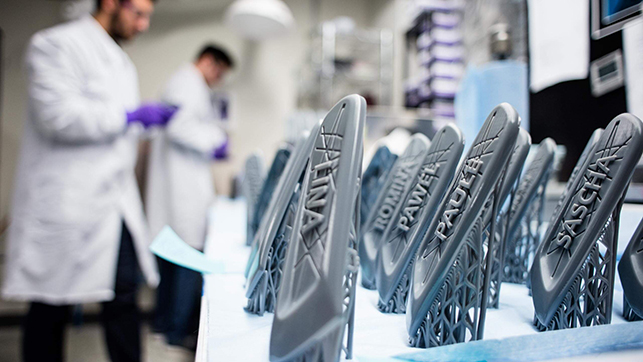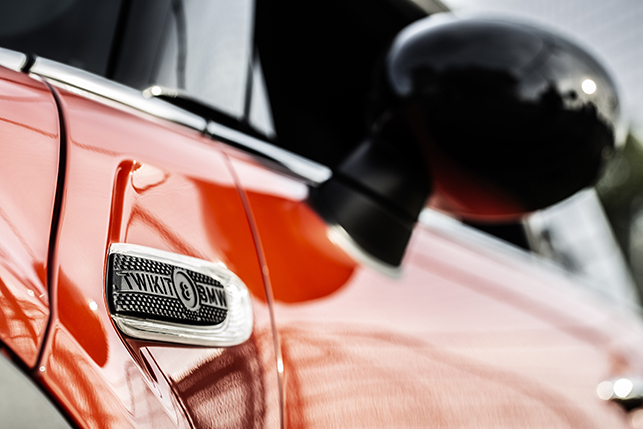
BMW has added more user customisable elements to its Mini brand, including personalised side scuttles
BMW Group is the first automotive company to allow its cars to be ‘fully personalised’, with its Mini brand taking the first steps to allow for 3D cosmetic adjustments to be made by the buyer beyond normal configuration options.
A glove compartment can be decorated with your favourite motto written on to it; LED lights can be installed that project your name on the street when you get out of the car, and the side scuttles behind the indicator lights can display your name and ‘race number’.
All of these are enabled by the latest technology in 3D printing, CNC machining and laser cutting, but the big leap has been in increasing the ease in which the process is implemented – from point of sale through to manufacture.
The German car manufacturer found its solution through Belgium-based start-up Twikit, which has developed a software-as-a-service solution to help personalise products on a large scale.
The end customer adapts the product – the car in this case – online as part of the typical online sales interface, and these digital files, plus those of thousands of other customers are then automatically taken to the appropriate production facility, which can then deliver the completely unique products.
By enabling the end-consumer to participate in the design process through an intuitive 3D interface of set parameters and rules (for instance: no swearwords), Twikit eliminates the manual work of creating the 3D designs part by part.
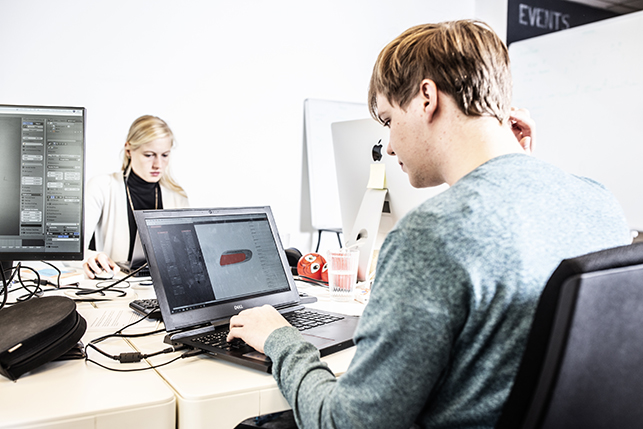
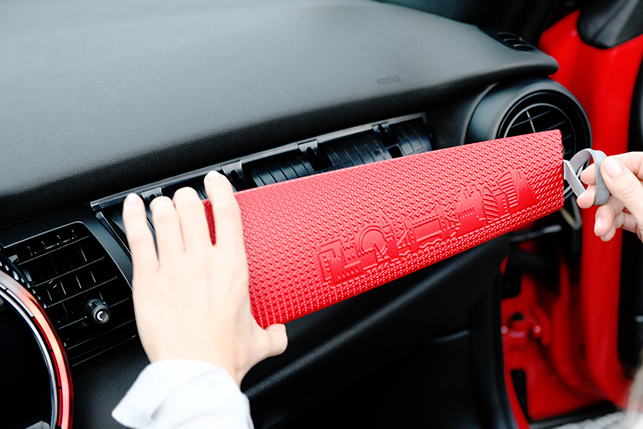
“Since its foundation, we have been working with major players in various industries,” says co-founder Gijs Hoppenbrouwers, stating that it’s not just the automotive industry that can benefit. “Innovative players in the medical industry can now use our technology to make prostheses and orthoses on a large scale quickly.
“Companies discover that they can personalise products with modern, high-tech production techniques such as 3D printing and laser cutting, tailored to each individual customer.”
The 3D printers used by BMW include its strategic partners HP, Carbon, and EOS, and the parts have to conform to the same high form, functionality and safety standards as standard factory supplied components in the original MINI accessories range, including crash tests and being able to stand-up to demanding weather conditions.
Hoppenbrouwers expects personalised production to increase further in the future. “More and more products resemble each other, and not only in the automotive sector. Allowing customers to personalise products is a way to stand out from the competition. The possibilities are endless. We reconcile production on a large scale with the desire of people to still have a unique product.”
Twikit was founded at the end of 2012 and has worked with customers including Walmart, Philips, Swarovski and BMW, with more in the pipeline to join the dots between design customisation and modern on-demand manufacturing.
The User Experience
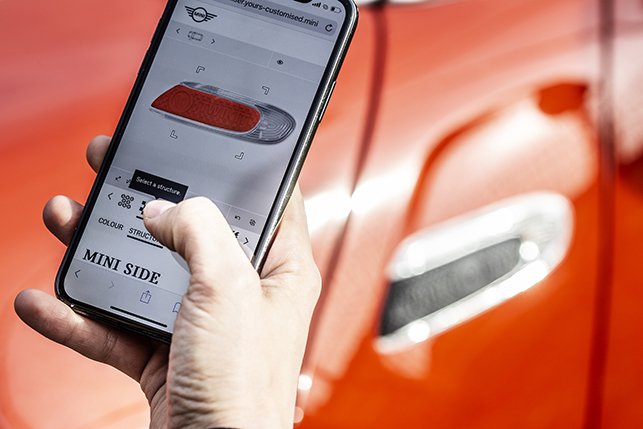
Customise your part
Using the browser or app, a choice of scalable surface finishes and patterns are available alongside four icon designs and a text entry field for an added personal message. It is possible to produce the side scuttle with different designs for the left and right side of the vehicle – for example the name of the driver and passenger.
Keep it Mini
The rims for the side indicator inlays known as side scuttles are 3D printed, post-processed and then painted in a colour shade selected by the customer from a choice of four options that match Mini’s ‘design intent’ of the car’s original paint options.
Installation
A clip mechanism is used for attaching them onto the vehicle, done by the user without need for a trip to the garage or car dealer, allowing them to be removed and swapped in the future as they like – or retuning the car to a neutral state should they wish to sell it in the future.
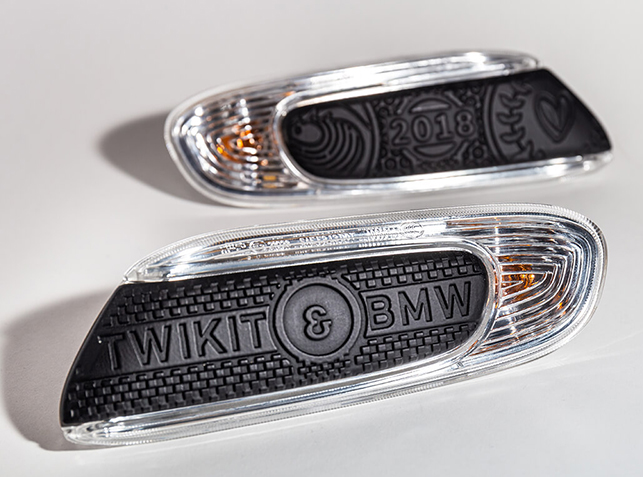
Twikit – How It Works
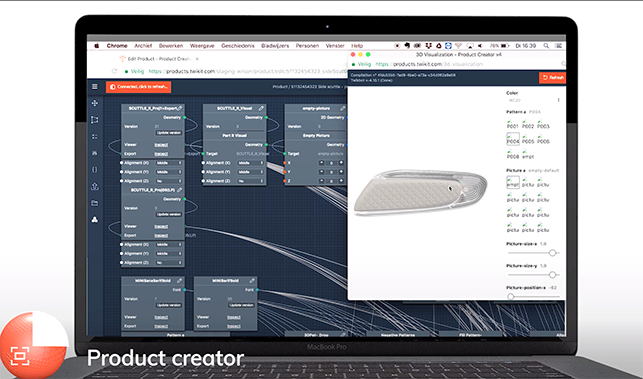
Twikit – The Product Creator
The Twikit Product Creator, is the playground where product developers and engineers can set customisation parameters on new or existing car parts.
All customisation parameters defined in the Product Creator are automatically translated into an interactive 3D configurator, ready to be integrated for in-store or online customer applications.
Customise your car
Through the front-end customer application, customers can create and order personalised car parts within the comfort of their smartphones or other devices.
By modifying and combining a wide range of patterns, text fields and graphics in real-time, they can build up their own unique design that can be ordered directly or saved and digitally shared.
With increasing amounts of shopping done through mobile devices – around 40 per cent at present – Twikit believes that offering mobile first 3D product interactions are of great advantage in today’s online landscape.
Twikit – Production Output
After saving a configuration and proceeding to a definite order, the Twikbot platform generates production ready files – and directly connects through API with the digital production facility – In this case it’s BMW’s Additive Manufacturing Center.
The order to production flow is integrated in existing ERP systems and includes a stand-alone administration zone.
The full process from product interaction to ordering and production can be tracked, logged and analysed.
